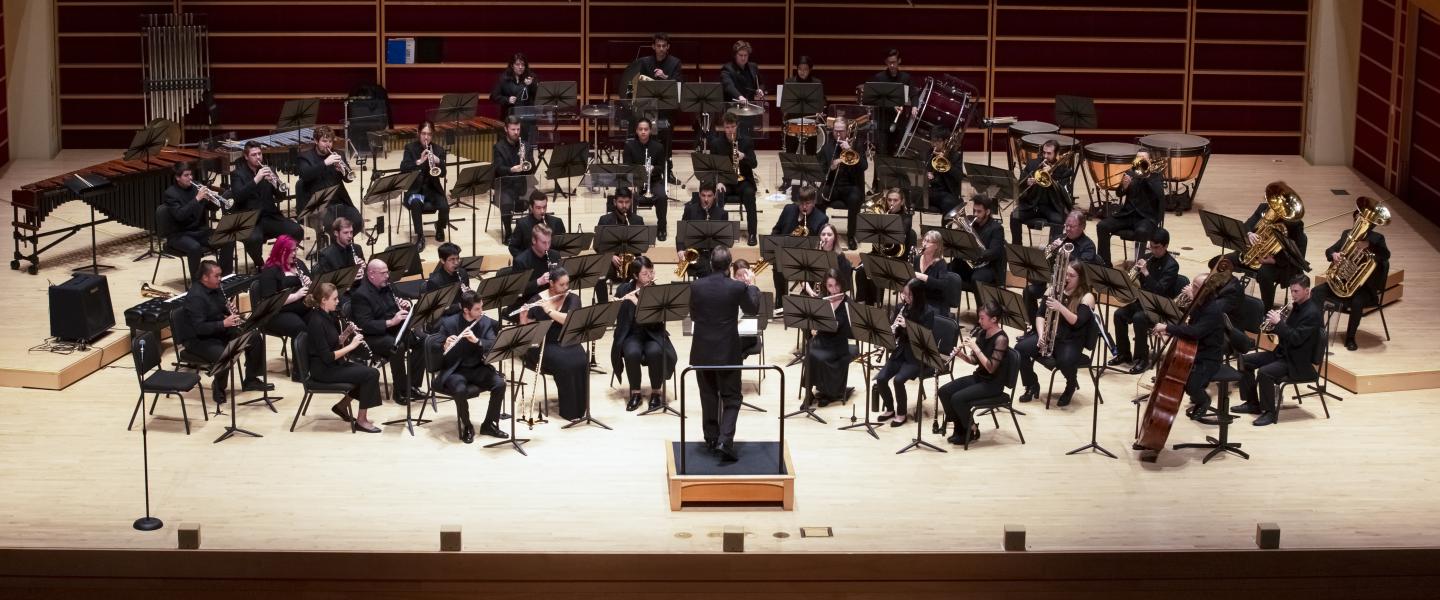Here's the full, searchable list of music courses. Use the two submenus to search by Course Rotation or Semester.
What does music mean? Why does music matter? These questions will shape the development of listening tools and cultural perspectives appropriate to the diverse and changing roles music plays in different times and places. No prior background in music is required. Satisfies GE Area C3 (Comparative Perspectives and/orForeign Languages).
Through writing and analysis, this course incorporates the following concepts: rhythm and meter, basic properties of sound, intervals, diatonic scales and triads, diatonic chord progressions, basic cadential formulas, melodic and phrase structure, dominant seventh, and the use of music notation software. Not open to Music majors. Satisfies GE Area C1 (Applied Arts Combining Studio and Theory).
Intensive practice in developing skill and fluency reading music notation. Aural and written practice recognizing, writing, and using intervals, scales, and key signatures. Beginning sight-singing and dictation using simple pitch and rhythmic materials. Should be taken concurrently with MUS 109. Restricted to Music majors and minors; open to non-majors only with consent of instructor.
Beginning class piano studies for Music Majors.
This course incorporates the concepts from MUS 105. In addition, through writing and analysis, the course will include: introduction to sequence, secondary dominants, modulation to closely related keys, secondary leading tones, diminished seventh and non-dominant 7th chords, and borrowed chords will be addressed. Figured bass, non-harmonic tones, melodic and phrase structure, and voice leading involving 4 part choral writing. Use of music notation software. A concurrent laboratory experience in ear training and sight-singing including melodic, harmonic, and rhythmic dictation is required. See Ear Training I.
Group and individual explorations of the fundamental techniques of singing. Develop strategies to address tone production, breath control, diction, repertory, and interpretation. Music Education students learn basic vocal pedagogy. Offered for upper-division credit as MUS 415 with additional course requirements. May be repeated for credit with consent of instructor.
An exploration of basic performance techniques, and pedagogy and teaching strategies for guitar. Offered for upper-division credit as MUS 418. May be repeated for credit with consent of instructor.
Development of sight-singing and dictation skills using pentatonic and diatonic materials. Techniques include moveable-do solfa, drills in intervals, triads, and dictation, augmented by computer software and group work. Also emphasizes development of broad listening skills, using examples of great works based upon simple diatonic melodies.
An exploration of basic performance techniques, instrumental pedagogy and teaching strategies associated with teaching violin and viola in the public schools.
An exploration of basic performance techniques, instrumental pedagogy and teaching strategies associated with teaching clarinet and saxophone in the public schools.

